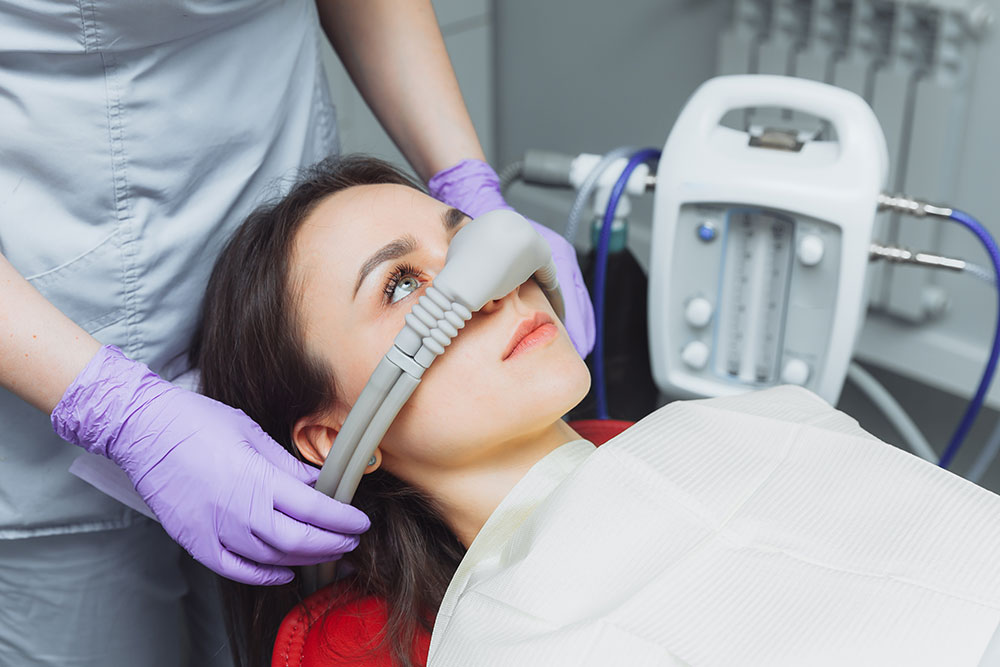Sedation
Sedation is a special type of anesthesia, which is used not only in dentistry but also in other medical branches.
It is used in patients who cannot control their fear of dental intervention or in those who cannot tolerate it due to other objective psychophysical reasons.
In this way, the anxious patient is provided with comfort during dental procedures, especially the longer and more complex ones.
That’s why sedation is equally useful for invasive procedures, such as oral surgery and implantology interventions, as well as simple ones, such as tartar removal and teeth whitening.
Indications for sedation
In addition to intense fear and anxiety, other conditions and feelings can be an indication for induction into sedation:
- the intense urge to vomit;
- fear of needles;
- tooth hypersensitivity;
- claustrophobia regarding the dental office as well as dental chair;
- hyposensitivity concerning local anesthesia;
- limited mobility;
- special needs (physical, cognitive, and behavioral).

Sedation – Complete dental treatment during one visit
Unlike local anesthesia (during which the patient is fully conscious) and general anesthesia (during which he is asleep, i.e. unconscious), in analgosedation, he is stunned so much that he does not feel pain or fear. However, he is aware enough that, if necessary, he can communicate with the dentist.
Fear of the dentist is a very common phenomenon, which can turn into a real phobia and be a major hindering factor in maintaining oral health.
Pathological fear usually leads to long-term neglect and decay of the dental row. Therefore, in such patients, it is usually necessary to carry out several different interventions.
This can be tooth extraction, periodontal surgery, apicoectomy, implant installation, jaw bone augmentation, sinus floor lift (sinus lift), and others.
Conscious sedation creates insensitivity to pain without losing consciousness. Therefore, it is the best way to undergo multiple dental treatments in just one visit to the dental office.
How is oral sedation carried out?
A specialist in anesthesiology with resuscitation puts the patient under sedation. Throughout the duration of the intervention, the anesthesiologist adjusts the anesthetic level and closely monitors the patient’s condition. So, from the moment of entering the surgical room, until leaving it.
It is the reason why sedation applies to both adults and children.
The sedated patient is, as mentioned, capable of communicating with the medical team, but is in a reduced state of alertness. This makes him maximally relaxed, and carefree, but sufficiently cooperative.
However, since oral sedation affects consciousness and motor skills, the patient must be escorted home after the treatment.
Advantages of sedation in dental practice
Thanks to sedation, numerous benefits are realized and proper dental care is obtained:
-
- the patient is in a state of calmness and relaxation, i.e. without nervous and emotional tension;
- the duration of dental interventions is greatly shortened;
- during sedation, it is possible to report complete rehabilitation and restoration in the mouth;
- there is less discomfort after the treatment.
Dr. Veselinović Dental Clinic has been cooperating with well-known and experienced anesthesiologists for years. Together with them, our excellent specialists in jaw orthopedics, oral surgery, and implantology can perform all dental treatments, even for patients who must undergo sedation.
